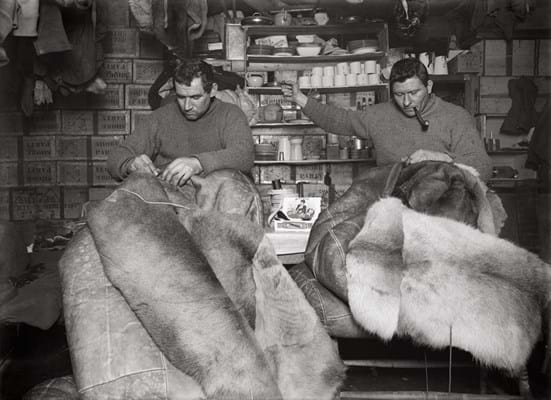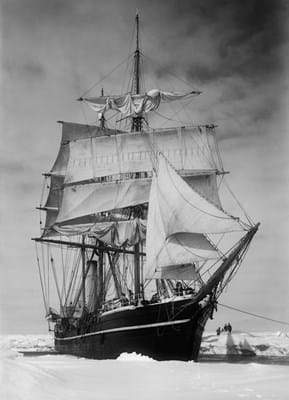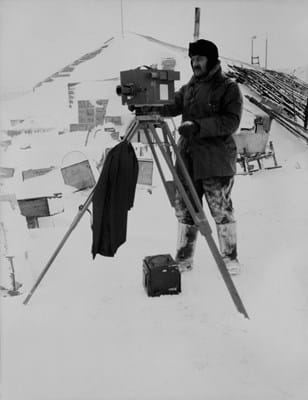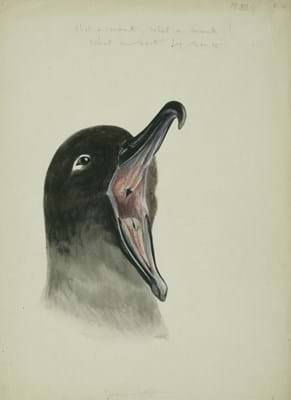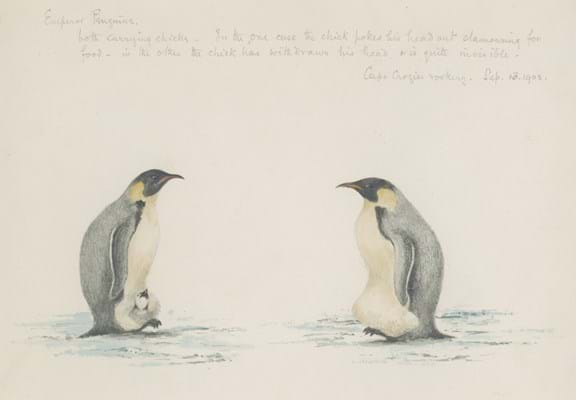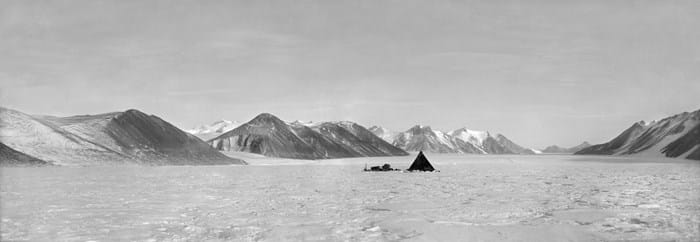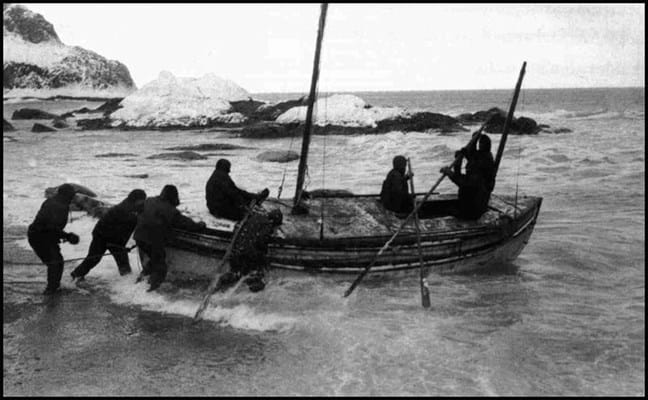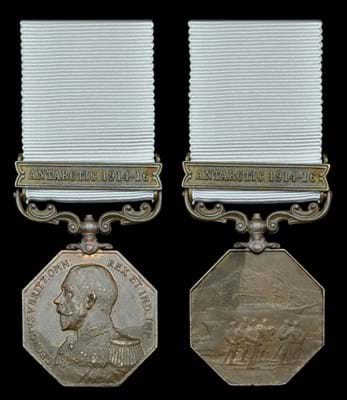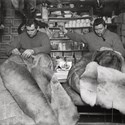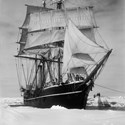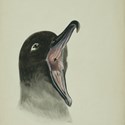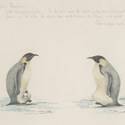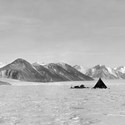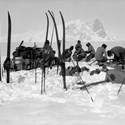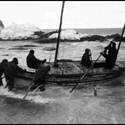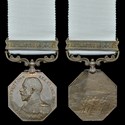As a collecting field, their exploits provide fantastic stories of bravery and survival against the odds mixed with relatively small numbers of participants, creating rarity and the chance to link objects to actual people involved.
Two of those well-known names are Herbert Ponting and Edward Wilson, and an exhibition opening today and running from Monday-Friday until August 19 in the Bonhams saleroom at 101 New Bond Street focuses on their work during the British Antarctic Expedition, better known by the name of its ship, the Terra Nova, which took place from 1910-13.
Visions of the Great White South reunites the famous photographs of Ponting with the evocative watercolours of Wilson over a century after the two men first dreamt up their plan for a joint show.
Captain Robert Falcon Scott appointed Dr Edward Wilson, a close friend and a fine watercolourist, as his chief scientist. Wilson was to die with Scott on the way back from the South Pole, having discovered that Amundsen reached there first.
Scott had also invited camera artist Herbert Ponting to join the expedition as official photographer, in a bold move in an era when high quality photography required great skill and careful attention in ordinary circumstances, let alone in the extreme environment of the Antarctic. Both Wilson and Ponting captured expedition life as well as keeping a visual record of scientific phenomena that the crew were studying.
Both Ponting and Wilson hoped to hold a joint exhibition. The loss of the South Pole party including Scott and Wilson made that impossible.
Scott was taught photography by Ponting during the expedition, and, in the images he produced, the influence of both Ponting and Wilson can be discerned in the ways he captured the vast and compelling landscapes of the Antarctic.
Making use of the Scott Polar Research Institute's historical collections, the exhibition will also show examples of Captain Scott's photography from the expedition in a series of new platinum prints of his work, produced by Belgian photographic publishers Salto Ulbeek in collaboration with the institute.
Wilson’s pictures could never be reproduced for sale, as he had intended. His widow, therefore, considered it better that they should be exhibited separately. The whole series of his watercolours was shown at the Alpine Club, while Ponting’s photographs were exhibited at the Fine Art Society's galleries, London.
Robert Brooks, chairman of Bonhams, said: “It is an honour for Bonhams to exhibit the art of two such extraordinarily talented and brave men and to be able to hang works together publicly for the first time ever. The Terra Nova expedition is famous, of course, for the tragic loss of Captain Scott and his companions. But its purpose was primarily scientific and Wilson and Ponting’s work reminds us of the pioneering quest for knowledge that underpinned the venture.”
The exhibition is free. Alongside the historic artworks, visitors will have the opportunity to see contemporary interpretations of the ‘great white south’. For several years the Friends of Scott Polar Research Institute, with the support of Bonhams and the Royal Navy, have run an artist in residence scheme which sends an artist to the Antarctic on board the icebreaker HMS Protector. Artists include Captain Scott's grand-daughter, Daphila Scott, and wildlife artist Darren Rees.
Polar Medal at Dix Noonan Webb
A Polar Medal awarded to a heroic Irish sailor who was on the slightly later Shackleton expedition was offered by London auctioneers Dix Noonan Webb on July 22. Underlining the demand for Golden Age relics, it made a £65,000 hammer price against an estimate of £15,000-20,000.
This unique bronze medal was given to Able Seaman Timothy McCarthy, Royal Naval Reserve, who was one of five men chosen by the explorer Sir Ernest Shackleton to accompany him on what is arguably the greatest open-boat journey of all time.
McCarthy, from Kinsale, County Cork, sailed with Shackleton in the 20ft long boat James Caird for 16 days from Elephant Island to South Georgia in 1916 to get help for the rest of their shipmates from the Polar exploration vessel Endurance, who were stranded and running out of food in Antarctica. Shackleton and his crew of five put their own lives in imminent danger to save their comrades from a lingering death, setting off on an epic 800 miles journey across the stormy sub-Antarctic Ocean.
DNW said the McCarthy Polar Medal buyer sold to a UK private collector after strong bidding - 23 bids altogether - which took it way above estimate.
Among the unsuccessful bidders was the Athy Heritage-Centre Museum in Kildare, Ireland, which had hoped to acquire the Polar Medal. The museum has the only permanent exhibition dedicated to Shackleton.
“McCarthy was indomitable, a true hero and just the sort of man needed for a hazardous mission such as the voyage of the James Caird,” says DNW director Pierce Noonan. “When handing over the tiller he always joked that it was ‘a fine day’ as the wind howled and the waves crashed around them. His natural optimism shone like a beacon throughout the voyage. Today his Polar Medal acts as a memorial to a sailor who survived Shackleton’s expedition but not the slaughter of the First World War."
The James Caird itself now sits in Dulwich College, south London, which Shackleton attended.


